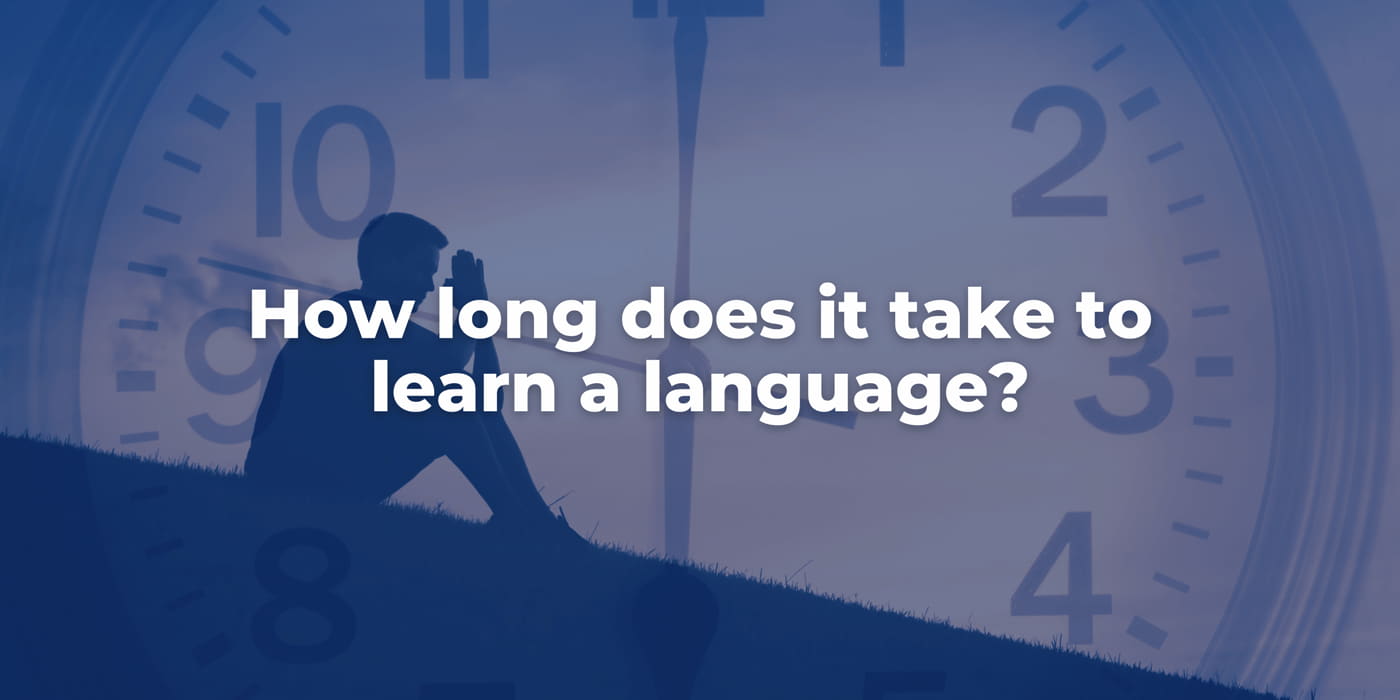How long does it take to learn a language?

To some extent, how long does it take to learn a language is much like asking how long is a ball of string? There has been much discussion and debate surrounding this topic but let’s face it, it’s probably one of the first questions on anyone’s lips when they’re considering learning a new language.
Firstly, it’s important to establish a few parameters to help address the question itself. What is your native tongue? What is your target language? What goals have you set yourself? How motivated are you to learn? Do you have time to dedicate fully to your learning? Are you planning on attending a full immersion language course in the country where your target language is spoken in its native tongue? Are you planning to study an intensive language course or part-time? Which level are you starting from and what level of fluency do you hope to achieve? You see, there are many variables that come in to play when answering the seemingly innocuous question how long does it take to learn a language?
Arguably, your level of motivation is the single most important factor in determining how long will it take to learn a language. Whatever language you plan on studying, if you lack motivation you won’t achieve your language learning objectives. So, let’s assume that you are very motivated. Even then, it’s still not an easy question to answer, as we’re all different and some language learners will have a greater natural flair for language acquisition than others!
How closely related to your native tongue is your target language? This is another important consideration to bear in mind when wondering how long does it take to learn a language? For instance, if Spanish is your native language, you will probably find it easier to learn Italian than an English speaker, as both Italian and Spanish are Romance languages that share common ancestry with many overlaps. That said, native English speakers find the romance languages such as Italian, Spanish, and French, easier to learn than Mandarin Chinese, as the Romance languages derive much of their vocabulary from Latin, as does English. Spanish is widely considered to be one of the easiest languages for native English speakers to learn as Spanish pronunciation is fairly straightforward. Spanish is a phonetic language, with most words pronounced much as they’re spelt, and Spanish tenses largely align with English. But running counter to this is the (probably fallacious) argument that no language should be any more difficult to learn than any other, as if this were true, then children would take longer to learn their own native tongue, and guess what? They don’t!
In Europe, the most commonly used scale for language attainment is the Common European Framework of Reference for Language which runs from A1 (beginner level) to C2 (mastery proficiency). In the US, a different but widely used yardstick is the Interagency Language Roundtable Scale, which runs from Level 0 (zero proficiency) to Level 5 (native/bilingual proficiency). ICLS, like most language schools in the US, use the ILR scale. It’s commonly accepted that, with the strong level of motivation and determination, ‘working knowledge’ of a target language (ILR 1+/2) range from 200 to 400 hours. ‘Working knowledge (upper beginner/lower intermediate) implies that language learners will achieve sufficient grasp of a language to ‘get by’ in most everyday situations. To achieve a higher level of language fluency (ILR2+/3+) will, by most estimates, take 550 to 900 hours, depending on aptitude and attitude!
 Just to complicate matters, but to further enhance language learners’ understanding of how long does it take to learn a language, The Foreign Services Institute (US State department agency for training foreign diplomats), languages are ranked by difficulty using English as the mother tongue and the target language. They use five categories of ranking:
Just to complicate matters, but to further enhance language learners’ understanding of how long does it take to learn a language, The Foreign Services Institute (US State department agency for training foreign diplomats), languages are ranked by difficulty using English as the mother tongue and the target language. They use five categories of ranking:
Category 1: (languages similar to English) 575-600 hours study (23-24 weeks full time). These include the European Romance languages and the Germanic ones.
Category 2: German (only) 750 hours (30 weeks full time)
Category 3. Languages with linguistic and cultural differences to English, such as Malaysian or Indonesian, 900 hours (36 weeks)
Category 4. Languages with significant linguistic and cultural differences to English (Slavic languages including Russian) 1100 hours (44 weeks)
Category 5. Languages considered exceptionally difficult for English speakers (Arabic, Mandarin Chinese, Japanese etc) 2200 hours (88 weeks)
But remember, these are only guides, and so much in determining how long does it take to learn a language, depends on you and what you are willing and able to bring to the table! But as a rule of thumb, it’s generally accepted that it will take roughly 1,000 to 2,000 hours to go from beginner to complete fluency in a target language.


